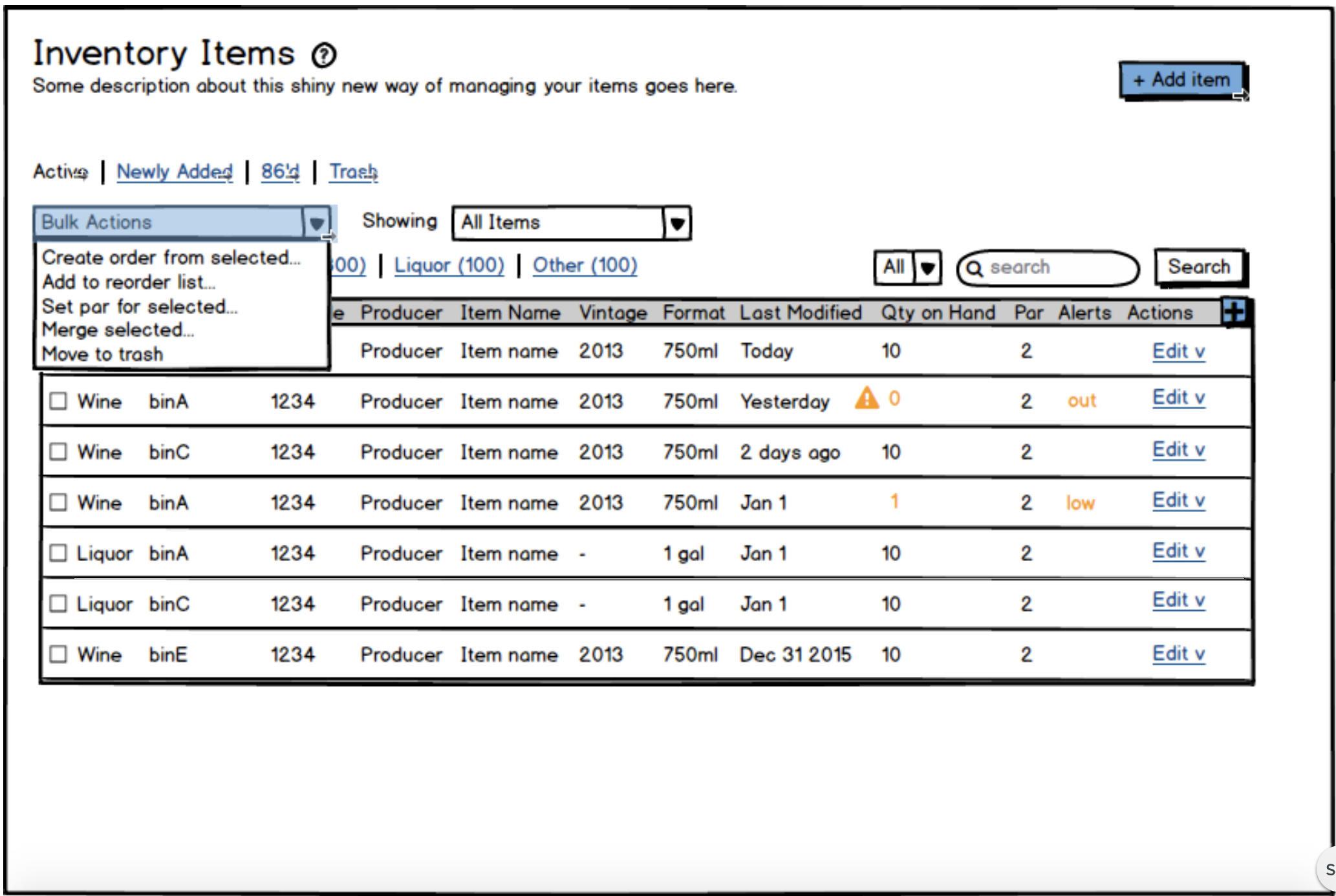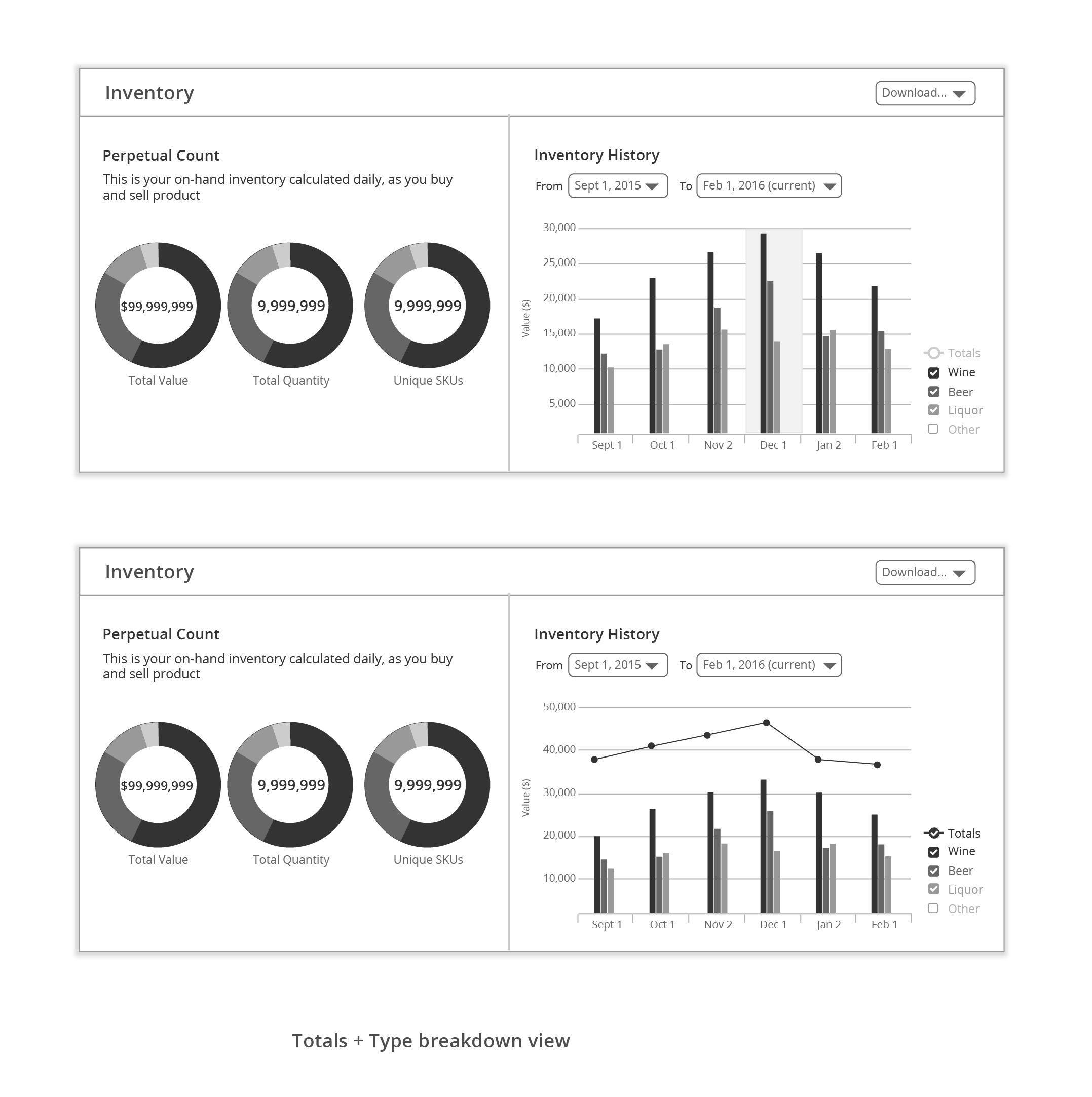In between work on other features, the team and I also concepted ideas to help with other problems we've observed in the product. These are all highly explorational.
Item Management
We observed during developing and testing features that the product lacks a way of efficiently managing inventory items in one central place. Instead, tools for managing various aspects of your inventory are scattered across several areas. Many common tasks require customer support or a developer to accomplish.
We envisioned a centralized interface to accomplish tasks users would expect to be able to do, such as remove items they're no longer carrying, fix mistakes such as typos in item names, edit multiple items at once with a bulk action, and better keep track of item quantity to ensure they don't run out of high-demand items.

Functionality for applying bulk actions would enable users to take care of common tasks on multiple items, instead of by manipulating items one-by-one in different areas of the current product.

Filtering on "new items" would help users contextualize recent activity to their program in order to report additions to their accounting department, add new items to their wine list, or set par (a count threshold in which the system would alert you if you are at or below it)

An "Actions" ability would more quickly functionality directly from the selected item, such as duplicating the item and editing the info to facilitate adding new items quicker into the system.

The current system doesn't guard against a permanent delete, so a "move to trash" function would safeguard against accidents.
Dashboard update
Users know a lot of data is available in the product, but they often don't know how to access it or what to do with it. In some cases the product doesn't provide the tools needed to run analysis.
We concepted a new dashboard area to put the most needed and valuable data front and center.
We started by thinking about how each of our personas would use this.
Why?
- Starting point when they log in to learn what needs attention
- A hub to get to where they need to go, and know they can return to
- Transparency into account activity
- Present data insights in an understandable format, so that they can make better decisions about their business
What?
- Shortcuts to frequently used areas
- Start activities that need attention or that the product reminds them about
- Help - onboarding, tips, product updates
- Overviews to learn the health of their business at a glance
What are the primary tasks?
- Claire (Lead Sommelier): activities she should take care of today
- Jenn (Beverage Director): inventory transactions (buying, selling…), item quanities
- Alisa (Restaurant Owner): financials and data needed from a business standpoint, callouts to discrepancies that might be costing her money

Dashboard design with notes on interactions and open questions



Items showing a low quantity would inform users to either reorder the item soon or remove it from their wine lists if they will not be stocking the item again.

Users could use the quickest moving item section to track what items are selling the fastest, so they do not run out of these high-demand items.

Users could use the slowest moving item area to determine what items they might need to more aggressively sell (such as by running a promotion, or lowering the price) in order to get them moving.
No comments.